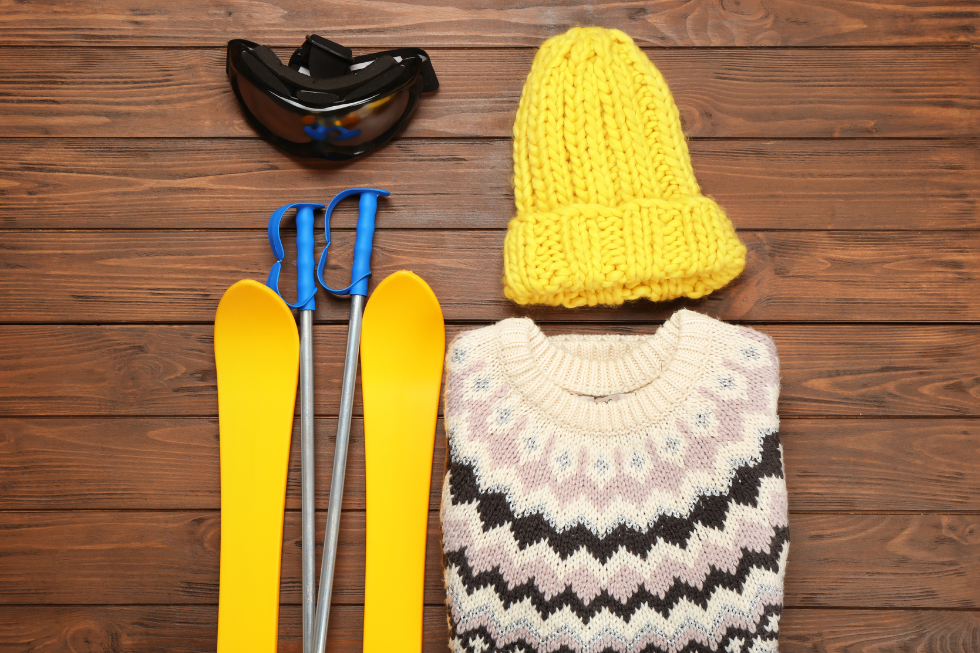How to Store Winter Gear for Next Season in Storage
Posted on May 1, 2025 at 10:00 am
As spring arrives and the cold begins to fade, it’s time to pack away the winter gear you relied on all season long—heavy coats, boots, scarves, ski equipment, snow shovels, and more. But what often starts as a quick closet swap can turn into a stressful, disorganized mess if you’re not careful. Tossing things in a bin or piling them in a corner of the garage may seem easy, but improper storage can lead to damage, wear, and frustration when winter returns.
Taking time now to properly store your winter gear ensures that it stays clean, functional, and ready to go next season. In this guide, we’ll explore smart strategies for winter gear storage—from clothing and boots to snow gear and outdoor tools—so you can enjoy peace of mind until the temperatures drop again.
Why Proper Winter Gear Storage Matters
Winter gear isn’t just bulky—it’s often expensive. Whether you’ve invested in high-quality snow boots, technical outerwear, or snow removal equipment, you want these items to last for multiple seasons. The way you store them plays a huge role in their longevity.
Without the right storage conditions, fabrics can deteriorate, boots can lose shape, and metal parts on snow gear can rust. Mold, mildew, pests, and fluctuating temperatures can turn a perfectly good jacket or pair of gloves into a musty mess. That’s why it’s important to treat winter gear storage as more than just a task—it’s a form of long-term maintenance.
By giving your gear the attention it deserves now, you’ll save yourself money and stress when winter comes around again.
Prep First: Clean Everything Before Storing
Before you start putting anything away, cleaning is a must. Storing dirty gear invites trouble. Dirt, sweat, and salt can break down fabrics and leave stains that become nearly impossible to remove months later. For clothing, follow the care instructions on the tags—many items require delicate cycles or air drying. Be especially careful with waterproof gear, which may need special detergents to preserve water resistance.
Boots and shoes should be wiped clean of any salt or debris, dried thoroughly, and stuffed with newspaper or boot forms to help maintain their shape. Gloves, hats, and scarves should also be laundered and fully dried to prevent mildew.
Outdoor gear like shovels and sleds should be rinsed and dried, with any metal components lightly oiled to prevent rust. Taking time now to properly prep your gear makes a big difference in the quality of your storage results.
Storage for Winter Clothing: A Seasonal Switch Done Right
When it comes to bulky winter coats, sweaters, and snow pants, space becomes a premium. Hanging everything in your closet year-round isn’t practical for most households. Instead, store items you won’t need during warmer months in bins, garment bags, or vacuum-sealed bags.
Garment bags are ideal for high-end coats or suits, as they protect from dust and pests while maintaining airflow. For everything else, plastic bins with locking lids are a popular choice. These bins stack well, protect against moisture, and can be labeled for easy identification.
Avoid cardboard boxes—they absorb moisture and can attract pests, which can lead to damaged clothing. If you’re short on closet space or your home doesn’t have an attic or basement, a secure self-storage unit is a great solution. Climate-controlled units are especially useful in areas like Alabama, where humidity can be high, even in spring and summer.
Using Vertical Space in Storage Units
If you’re using a storage unit to hold your winter gear, make the most of the space by stacking items vertically. Store bins on shelving units to keep things off the ground and easy to access. Hanging organizers are helpful for storing scarves, gloves, and hats, especially if you want to retrieve any of these items mid-season for a trip or unexpected cold snap.
It’s smart to group items by category—keep all snow gear together, outerwear in another section, and accessories in clearly marked bins. This way, you’re not digging through an entire unit next November to find your snow boots.
Boots, Gloves, and Accessories: Protect the Details
Winter accessories may be small, but they’re easy to misplace and even easier to damage if not stored properly. Wool gloves can shrink if exposed to moisture. Leather boots can crack if they dry out. And who hasn’t gone looking for a missing mitten or mismatched glove after months of storage chaos?
To prevent these frustrations, organize your smaller items in soft storage containers, over-the-door pocket organizers, or smaller bins within a larger container. Keep pairs together using clips or rubber bands and avoid overcrowding to preserve their shape. Store boots upright with forms or rolled towels inside to avoid creasing. Leather boots especially benefit from a leather conditioner before going into storage.
And don’t forget about those reusable hand warmers, ski passes, or boot spikes—they often get tossed in pockets and forgotten. Gather all those extras and store them in a zippered pouch labeled “winter extras” so they’re easy to find later.
Snow Gear and Equipment: Safe Storage for Big Items
Snow blowers, shovels, sleds, and skis are large, awkward, and easy to store incorrectly. After cleaning and drying these items, the next step is finding the right place and method for storage that prevents damage.
For tools like snow shovels and blowers, wall hooks in a garage or shed can help keep them out of the way. Avoid leaning them against walls, which can lead to warping or falling. If you’re using a storage unit, be sure to place them near the back or along the side to keep the main aisle clear.
Sleds and skis should be wiped clean, dried, and stored horizontally or upright in padded racks. Avoid stacking heavy items on top of these, as this can affect their performance or bend components. If you have a ski bag, use it—it offers an extra layer of protection against dust and bumps.
Just like with clothing, labeling is key. Consider attaching tags to large equipment with details like “tuned and waxed,” “ready to use,” or “needs maintenance” to save time next season.
Climate Considerations for Outdoor Equipment
In Southern climates like Alabama, where off-season temperatures can get hot and humid, keeping your snow gear in a shed or garage may not be ideal. Excess heat can warp plastics or damage synthetic materials, while moisture can cause rust or mold.
That’s why climate-controlled storage is a valuable option. It gives you a stable environment to protect the lifespan of your gear. Think of it as an investment that pays off when you’re not replacing snow equipment every other year due to poor storage.
Don’t Forget About Kids’ Winter Gear
If you’ve got kids, you already know how fast they outgrow their seasonal gear. Winter coats, boots, gloves, and snow pants that fit just fine in January might be snug by next December. That doesn’t mean you should toss everything out just yet.
Create a labeled “Too Small / Hand-Me-Down” bin and store it separately from the rest of your gear. This keeps your main storage area organized and helps you easily pass on quality items to younger siblings, cousins, or donation centers.
Consider creating an inventory list as well. Jot down what sizes and items you have on hand, so you’re not buying duplicates during next year’s early season sales.
Create a Winter Reentry Box
This small but mighty tip can make your winter restart seamless: create a winter reentry box. This is a single, easy-to-access container that includes your most important cold-weather essentials. Think gloves, hats, hand warmers, ice scrapers, and a basic first aid kit.
The idea is to have everything you need for the first few cold days readily available without digging through all your storage. Label the box and place it near the front of your closet, garage, or storage unit. It’s a little effort now that saves a ton of hassle later.
When to Reevaluate Your Winter Storage System
As you build out your winter storage strategy, it’s helpful to treat it as a living system—something you tweak and improve over time. If you found yourself scrambling for gear this past winter, now is a great time to figure out what worked and what didn’t.
Ask yourself:
- Did anything get damaged due to poor storage?
- Was it easy to find what I needed?
- Did I store too much or too little?
- Would a storage unit make more sense next year?
Answering these questions can help guide you toward a more efficient and effective storage solution. The goal is always to make seasonal transitions as smooth and stress-free as possible.
Store Smarter, Not Harder
Storing your winter gear properly isn’t just a task—it’s a smart way to protect your investment, reduce seasonal stress, and create a more organized home. With just a bit of preparation, you can ensure everything from coats to snow blowers stays in top condition and is ready for action when winter comes back around.
Whether you’re using your garage, closets, attic, or a dedicated storage unit, the key is to be intentional. Clean thoroughly, sort thoughtfully, label clearly, and consider the climate where your items are being stored.
At Attic Plus, we offer clean, secure, and climate-controlled storage units to help Alabama residents store winter gear with confidence. With flexible sizes and month-to-month leases, we make it easy to transition your gear out of sight—but never out of mind—until next season.


